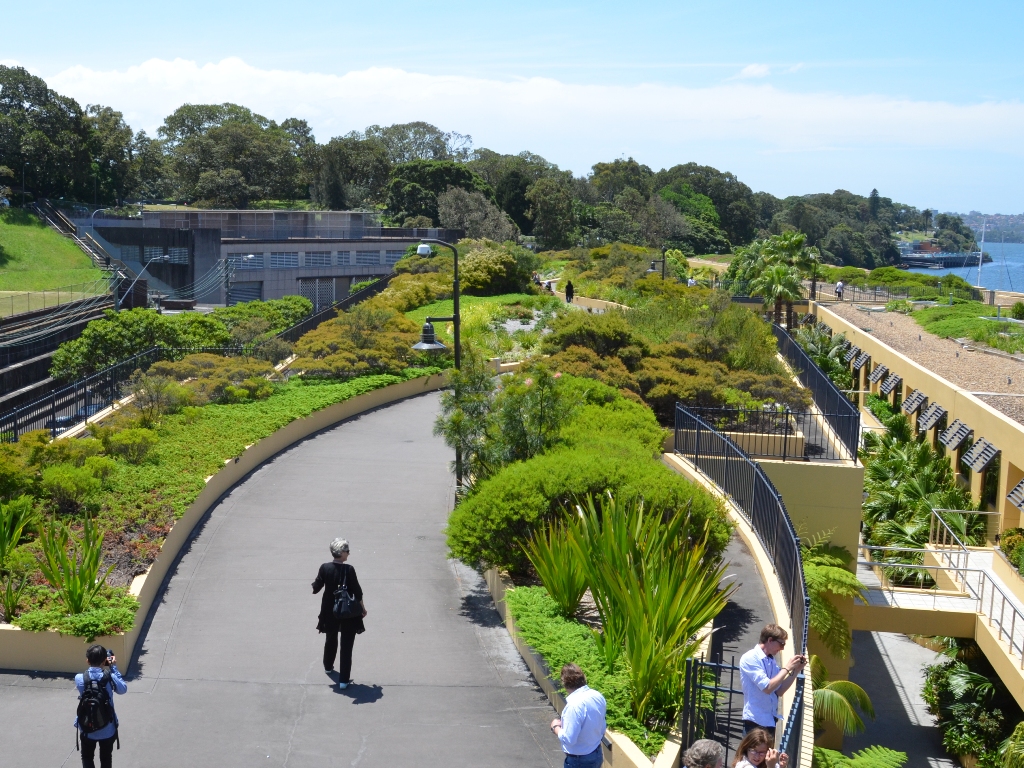
Green Infrastructure:
There is an international movement towards the regeneration of urban landscapes due to an increased awareness about human impact on the environment. As urban development and populations increase there is a greater demand to improve upon the planning mistakes of the past. There is a movement towards mitigating the impact of impermeable urban infrastructure materials such as concrete by including permeable pedestrian paths, bio-swales, street planting, green roofs, green walls, rejuvenated wetlands, urban forests, parklands and other vegetative systems into the urban fabric.
Green Infrastructure refers to any vegetative infrastructure system which enhances the natural environment through direct or indirect means. It describes the network of green spaces and water systems that deliver multiple environmental, economical and social values and benefits for sustainable urban development. Green Infrastructure includes green roofs, living walls, parks and reserves, backyards and gardens, waterways and wetlands, streets and transport corridors, pathways and green corridors, squares and plazas, sports fields and cemeteries. Green Infrastructure provides and connects vital ecosystem services which contribute or enhance urban sustainability and the natural environment.
GI: a strategically planned network of natural and semi-natural areas with other environmental features designed and managed to deliver a wide range of ecosystem services. It incorporates green spaces (or blue if aquatic ecosystems are concerned) and other physical features in terrestrial (including coastal) and marine areas. On land, GI is present in rural and urban settings ie green roofs, living walls, rain gardens, parks, community gardens, canopy cover, parklands, urban forests.
Green Infrastructure Benefits include storm-water management, climate adaptation, mitigation of Urban Heat Island Effects, enhanced biodiversity, carbon sequestration, enhanced air quality, sustainable energy production, enhanced storm water quality returning to the natural environment and to deep soil profiles, improved anthropocentric functions such as increased quality of life and improving biophilia.
Green Infrastructure (GI) / Enhancing Natural Capital
Overview:
Human society depends on the benefits provided by nature such as food, materials, clean water, clean air, climate regulation, flood prevention, pollination and recreation[1]. However, many of these benefits, frequently referred to as ecosystem services, are used as if their supply is almost unlimited and treated as free commodities whose true value is not fully appreciated. This can result in public authorities turning to built infrastructure — grey infrastructure — as a substitute for natural solutions to problems such as flood prevention. In Australasia we consequently continue to degrade our natural capital, jeopardising our long-term sustainability and undermining our resilience to environmental shocks. As stated in the Resource Efficiency Roadmap[2], the failure to protect our natural capital and to give a proper value to ecosystem services will need to be addressed as part of the drive towards smart, sustainable and inclusive growth.. The EU roadmap identifies investing in GI as an important step towards protecting natural capital. All AUS government tiers need to collaborate and establish a GI Commission to develop a GI strategy[5]. The EU Resource Efficiency Roadmap states that their Commission will draft a Communication on GI. This document is the Commission’s response to these commitments[6]. It sets out how EU-wide action can add value to the local initiatives currently underway.
What is Green Infrastructure (GI)?
GI is a successfully tested tool for providing ecological, economic and social benefits through natural solutions. It helps us to understand the value of the benefits that nature provides to human society and to mobilise investments to sustain and enhance them. It also helps avoid relying on infrastructure that is expensive to build when nature can often provide cheaper, more durable solutions. Many of these create local job opportunities. Green Infrastructure is based on the principle that protecting and enhancing nature and natural processes, and the many benefits human society gets from nature, are consciously integrated into spatial planning and territorial development. Compared to single-purpose, grey infrastructure, GI has many benefits. It is not a constraint on territorial development but promotes natural solutions if they are the best option. It can sometimes offer an alternative, or be complementary, to standard grey solutions.



